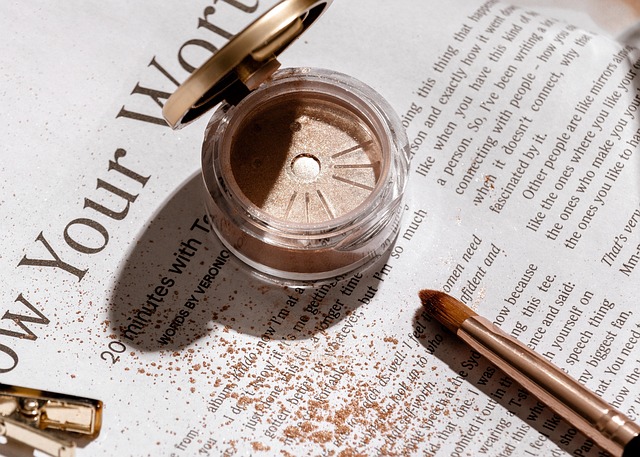Precious Metals IRAs offer investors a tax-advantaged way to include physical gold, silver, platinum, and palladium in their retirement portfolios as a hedge against inflation, currency devaluation, and market volatility. These accounts comply with IRS standards for purity and fineness of metals and require careful selection of storage solutions, metal varieties, and custodians. Companies like Regal Assets and Birch Gold are distinguished in this field, providing education, a range of metals, and adherence to IRS regulations. For those considering rolling over a 401(k) into a Precious Metals IRA, it's important to understand the contribution limits, which for individuals aged fifty and above were up to $7,000 in 2023, with adjustments possible for inflation and previous Traditional IRA contributions. Investors should diversify their holdings across gold, silver, platinum, and palladium, considering both the stability of gold and the diversification benefits of silver, as well as the roles of platinum and palladium in protecting against economic uncertainties. A mix of coins and bullion within each metal type, along with thoughtful consideration of storage options, can create a balanced and effective Precious Metals IRA portfolio.
Navigating the landscape of retirement planning, investors often seek diversified strategies to secure their financial future. A burgeoning avenue is the incorporation of physical precious metals within Individual Retirement Accounts (IRAs). This article delves into the intricacies of precious metals IRA investments, guiding readers through the selection of top companies, understanding eligibility and contribution limits, and exploring the array of metals permissible in these accounts. Additionally, we’ll examine strategies to diversify your precious metals IRA portfolio, ensuring a comprehensive approach to safeguarding your retirement savings with tangible assets.
- Understanding Precious Metals IRA Investments
- Top Precious Metals IRA Companies
- Eligibility and Contribution Limits for Precious Metals IRAs
- Types of Precious Metals Allowed in an IRA
- Strategies for Diversifying Your Precious Metals IRA Portfolio
Understanding Precious Metals IRA Investments

Precious metals Individual Retirement Account (IRA) investments offer a unique and time-tested means of diversifying retirement portfolios. Unlike traditional stock or bond investments, these IRAs allow for the direct ownership of physical gold, silver, platinum, and palladium within a tax-advantaged retirement account. Investors can benefit from the historical store of value that precious metals represent, which can act as a hedge against inflation, currency devaluation, and market volatility. These IRAs function similarly to traditional or Roth IRAs but are specialized to include approved forms of physical precious metals. The Internal Revenue Service (IRS) stipulates specific purity and fineness requirements for the metals included in these accounts, ensuring that they meet a certain standard of investment quality. Investors should conduct thorough research or consult with a specialist in Precious Metals IRA investments to understand the nuances of holding physical metals within an IRA, including storage options, the process of purchasing and transferring metals, and the compliance with IRS regulations to maximize the potential benefits of this investment strategy. Understanding the role of precious metals as a component of a diversified retirement portfolio is crucial for those looking to protect their savings against economic uncertainties while simultaneously leveraging the potential growth opportunities that these assets offer.
Top Precious Metals IRA Companies

When considering the top precious metals IRA companies, investors should evaluate a range of factors including the company’s reputation, variety of metals offered, storage options, customer service, and fees. Among the distinguished firms in this sector, Regal Assets and Birch Gold stand out for their comprehensive services and expertise. Regal Assets prides itself on customer education and offers a diverse portfolio of precious metals, including gold and silver coins and bars. They provide investors with secure storage solutions through third-party vaults as well as segregated storage for larger investments. Birch Gold, similarly, is known for its knowledgeable staff and a wide selection of rare-earth metals like palladium and platinum alongside the traditional gold and silver. Both companies facilitate the process of rolling over existing retirement accounts to include precious metals, ensuring compliance with IRS regulations. Their aim is to provide investors with a tangible asset component within their retirement portfolios that can potentially offer protection against market volatility and inflation. Investors should conduct thorough research and consider these leading precious metals IRA companies when diversifying their retirement savings.
Eligibility and Contribution Limits for Precious Metals IRAs

401(k) rollovers, traditional and Roth IRAs are prime candidates for accommodating precious metals under certain IRS guidelines. To be eligible for a Precious Metals IRA, investors must select a custodian that specializes in this type of account and adheres to the Internal Revenue Service’s stipulations regarding IRA investments. These custodians hold the physical metals securely and facilitate the transaction process within the IRS-approved framework.
Contribution limits for Precious Metals IRAs align with those of traditional and Roth IRAs, subject to adjustments based on inflation. For 2023, individuals who are fifty years or older at the end of the year can contribute up to $7,000, while those younger than fifty can contribute up to $6,000. These limits apply unless the individual has a prior Traditional IRA and is not an active participant in a 401(k) plan in which case the contribution limit is higher. It’s crucial for investors to consult with both a financial advisor and a Precious Metals IRA specialist to navigate these limits and ensure compliance with all IRS regulations regarding contributions and investment types.
Types of Precious Metals Allowed in an IRA

Precious metals IRAs offer investors a unique opportunity to diversify their retirement portfolios by including physical gold, silver, platinum, and palladium. The Internal Revenue Service (IRS) stipulates that for metals to be eligible for inclusion in an Individual Retirement Account (IRA), they must meet specific fineness or purity requirements. Gold and silver are typically allowed in the purest form, with gold often required to be .995 fine or better, and silver at least .995 fine. Platinum and palladium have slightly different IRS standards, with platinum usually required to be .9995 fine and palladium at least .995 fine.
Within the category of precious metals, there are distinct types that investors can hold in their IRAs. For gold, coins like American Gold Eagles and Canadian Gold Maple Leafs are popular choices. For silver, the American Silver Eagle and the Canadian Silver Maple Leaf are commonly held. Platinum investments are more varied, with the Austrian Philharmonic and the Canadian Platinum Maple Leaf being common selections. Palladium options include the Canadian Palladium Maple Leaf and the Vienna Philharmonic Palladium. Each of these metals serves as a potential hedge against inflation and market volatility, offering a tangible asset that can provide stability to a retirement portfolio. Investors should consult with precious metals IRA specialists to ensure compliance with IRS regulations and to make informed decisions tailored to their investment goals.
Strategies for Diversifying Your Precious Metals IRA Portfolio

When considering strategies for diversifying your Precious Metals IRA portfolio, it’s crucial to balance your holdings between different types of metals and consider the various forms those metals can take. Gold often serves as a stable anchor in an investment portfolio due to its historical value retention capabilities. However, including silver, platinum, and palladium can offer diversification benefits. Silver, for instance, has industrial applications that can influence its market demand and price. Platinum and palladium, while less commonly held, can act as a hedge against inflation and economic uncertainty due to their industrial uses in automotive and electronics sectors.
Another strategy is to diversify within the types of precious metals you choose. For gold, this could mean holding both coins and bullion. Coins might be attractive for collectors or those interested in numismatic value, while bullion offers a more straightforward investment tied to the metal’s weight and purity. Diversification also extends to storage options; some investors prefer allocated accounts where they own a specific amount of a particular metal, while others opt for unallocated accounts, which offer more liquidity but involve sharing ownership with the custodian. Additionally, considering different weights and sizes of bullion can further diversify your holdings. For example, larger bars may be more cost-effective to acquire and store, whereas smaller coins could offer greater liquidity. By carefully selecting a mix of precious metals that complement each other and adhere to your investment goals and risk tolerance, you can construct a robust and diversified Precious Metals IRA portfolio.
Incorporating physical precious metals into a retirement portfolio through a self-directed IRA can serve as a valuable hedge against inflation and market volatility, offering investors a tangible asset component within their retirement savings. By choosing from among the top precious metals IRA companies, informed by eligibility criteria and contribution limits, individuals can diversify their holdings with gold, silver, platinum, and palladium. This strategic approach to retirement planning ensures that one’s investment portfolio is well-rounded and potentially more resilient against economic shifts. For those looking to safeguard their financial future with precious metals, understanding the types of metals allowed and developing a diversification strategy are key steps towards achieving this goal.
